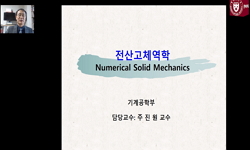Epoxy-coated rebar is a crucial material in marine construction. To study the bond performance of epoxy-coated rebar withhigh-strength concrete in different structural forms, pull-out tests were conducted on 18 specimens. The failure patterns andbond-...
http://chineseinput.net/에서 pinyin(병음)방식으로 중국어를 변환할 수 있습니다.
변환된 중국어를 복사하여 사용하시면 됩니다.
- 中文 을 입력하시려면 zhongwen을 입력하시고 space를누르시면됩니다.
- 北京 을 입력하시려면 beijing을 입력하시고 space를 누르시면 됩니다.



Finite element parametric analysis of bond-slip performance between epoxy-coated rebar and high-strength concrete
한글로보기https://www.riss.kr/link?id=A109242053
-
저자
Tian Penggang (Xi'an Jiaotong University) ; Wang Kai (Xi'an Jiaotong University) ; Niu Jianhui (Xi'an Jiaotong University) ; Xie Zhixun (Xi'an Jiaotong University) ; Liu Kangning (Xi'an Jiaotong University) ; Wang Zhenshan (Xi'an Jiaotong University)
- 발행기관
- 학술지명
- 권호사항
-
발행연도
2024
-
작성언어
English
- 주제어
-
등재정보
KCI등재,SCIE,SCOPUS
-
자료형태
학술저널
-
수록면
704-716(13쪽)
- DOI식별코드
- 제공처
-
0
상세조회 -
0
다운로드
부가정보
다국어 초록 (Multilingual Abstract)
Epoxy-coated rebar is a crucial material in marine construction. To study the bond performance of epoxy-coated rebar withhigh-strength concrete in different structural forms, pull-out tests were conducted on 18 specimens. The failure patterns andbond-slip behavior of different epoxy-coated rebar-high strength concrete specimens were analyzed. Based on these tests,finite element analysis software Abaqus was used to conduct a parametric analysis by varying the rebar diameter and bondlength, investigating the ultimate bond strength of components under different parameters. The results indicate that due tothe relatively low compressive strength of the concrete, specimens exhibited rebar pull-out failure, concrete splitting failure,and rebar fracture failure during the pull-out tests. As the rebar diameter increased, the anchoring capacity of the epoxycoatedrebar improved. Specifically, for every 1 mm increase in diameter, the ultimate bond load increased by 16.9% to23.9%. Additionally, increasing the bond length of the rebar enhanced the ultimate bond strength of the specimens, with theultimate bond load increasing by 13.2% to 24.2% for every 1d increase in length. The conclusions drawn from this researchprovide technical support for the engineering application of epoxy-coated rebar in high-strength concrete.
동일학술지(권/호) 다른 논문
-
Ceramic tile surface defect detection with integrated feature engineering and defect fuse classifier
- 한양대학교 청정에너지연구소
- Chi Zhang
- 2024
- KCI등재,SCIE,SCOPUS
-
Correlation between bending strength and porosity in vermiculite added ceramic bodies
- 한양대학교 청정에너지연구소
- Umut Önen
- 2024
- KCI등재,SCIE,SCOPUS
-
- 한양대학교 청정에너지연구소
- Zhang Xiuling
- 2024
- KCI등재,SCIE,SCOPUS
-
- 한양대학교 청정에너지연구소
- D. Mythili
- 2024
- KCI등재,SCIE,SCOPUS




 KCI
KCI






